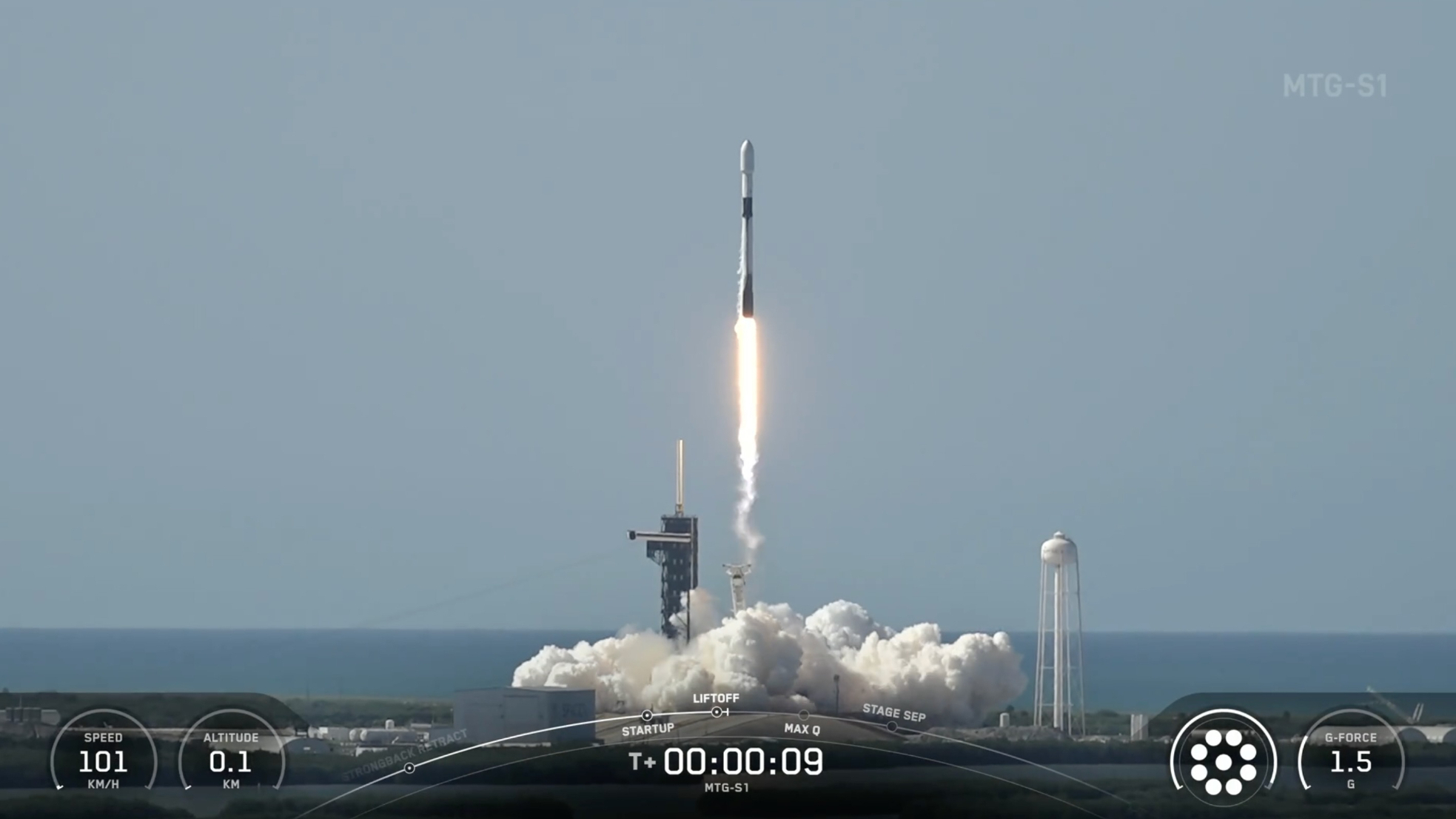'Mars Base Camp': Lockheed Fleshes Out Red Planet Space Station Plan
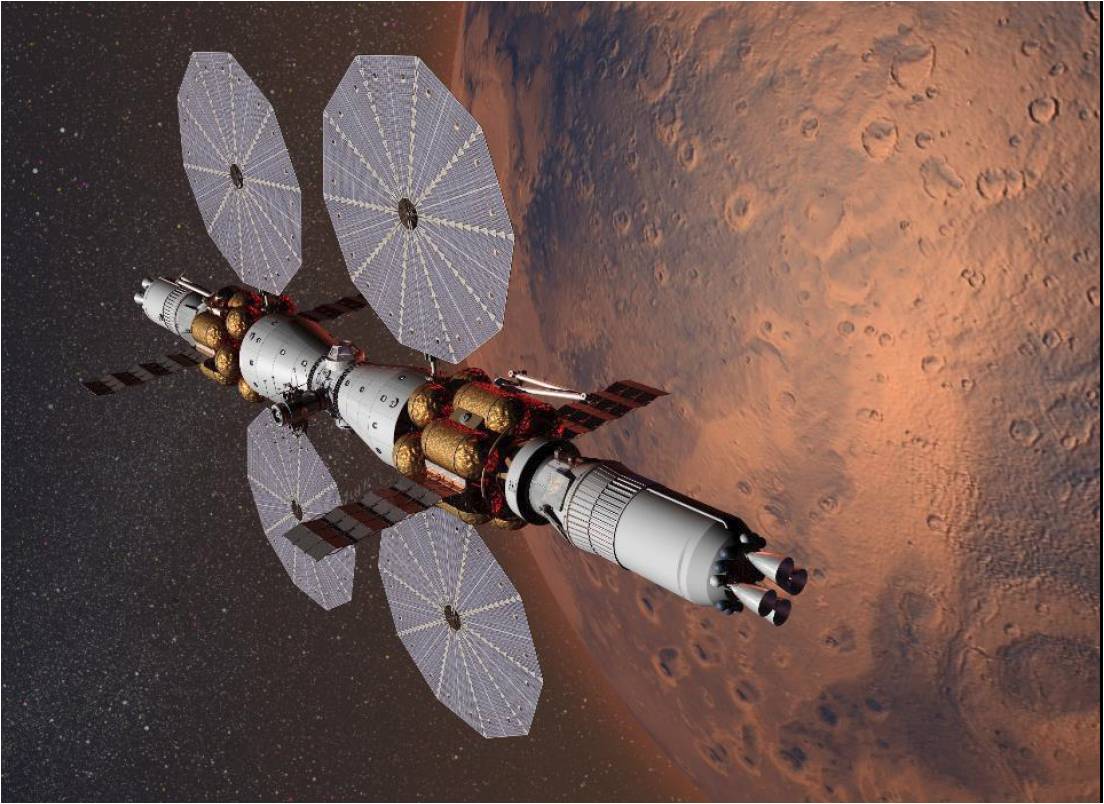
THE WOODLANDS, Texas — In 2028, a space station could be circling Mars, if a new concept comes to fruition. As a prelude to human expeditions to the planet's surface, researchers aboard the proposed orbiting lab would aim to answer key questions about the complex world.
The six-person Mars Base Camp is led by researchers at aerospace giant Lockheed Martin, who unveiled the concept last year and fleshed out more details of the project here at the 48th Lunar and Planetary Science Conference (LPSC), held March 21-25. The Mars Base Camp is designed to vastly amplify the collection of imagery and scientific data from multiple sites on the planet over a full year of crewed occupation.
This work could help identify the best spots for humans to explore on the Martian surface, Lockheed Martin representatives have said. The station's inhabitants could also use virtual reality, immersive technology and artificial intelligence to drive advanced rovers and other craft on the Red Planet in real time. [Mars Base Camp: Lockheed Martin Concept Video]
In addition, samples of rock and soil that robots such as NASA's upcoming 2020 Mars rover collect on the Martian surface could be launched to Mars Base Camp, where crewmembers could examine them for signs of Red Planet life, project team members have said.

Real-time operation
Since Lockheed Martin researchers unveiled the project, they have been brainstorming with scientists and engineers from a variety of institutions to refine the idea. Discussions at LPSC continued that work.
"The discussion we're having here at the meeting is, how best can scientific discovery be enabled by having scientists in close proximity to mobile hardware on the surface of Mars or in the Martian atmosphere," Steve Jolly, chief engineer for civil space at Lockheed Martin in Denver, told Space.com.
For example, a human field geologist on Mars would make quick decisions about which spots to explore, the best rock formations to study and where to dig for soil samples, Jolly said. "We want rovers under scientific control to behave in the same way."
Breaking space news, the latest updates on rocket launches, skywatching events and more!

That's not possible when Mars rovers and their handlers are on different planets. one to two days the duties that asaid Ben Clark, chief scientist on the Lockheed Martin team studying the Mars Base Camp.
Moreover, if the rover experiences a problem, there's a wait to find out what went wrong, followed by another wait as the issue is addressed, Clark told Space.com.
Mars Base Camp would minimize such delays, he said.
"We could be operating rovers on the surface in joystick mode from the Mars Base Camp, as opposed to the way we control rovers today," Clark said. [Amazing Mars Photos by NASA's Curiosity Rover (Latest Images)]
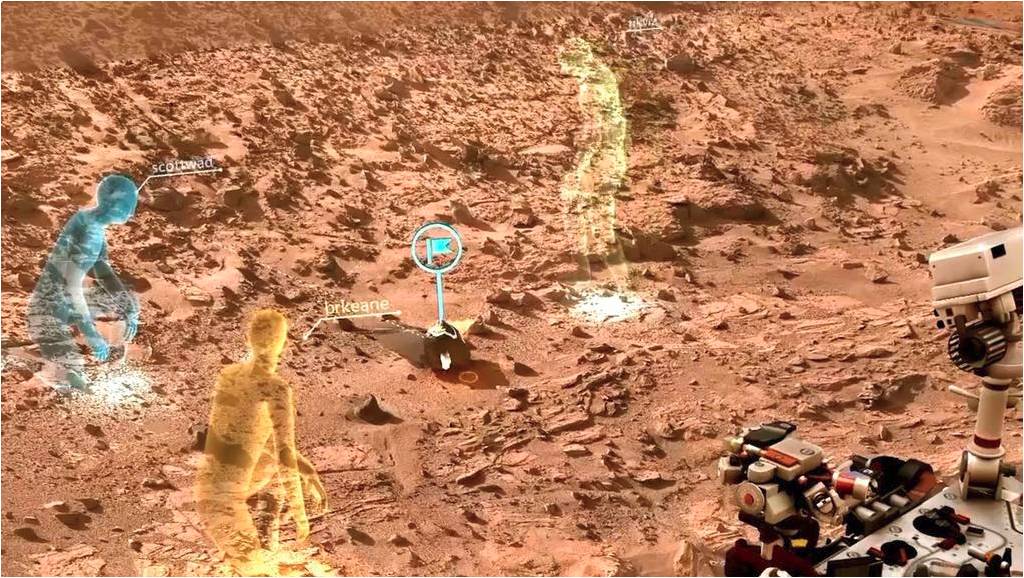
Exploration tools
Mars Base Camp astronauts could also interact virtually with Mars surface robots, using technology like that developed at Lockheed Martin's Collaborative Human Immersive Laboratory, Jolly said.
Other high-tech tools could aid surface exploration as well, Jolly added. For example, tiny robots carrying small sensors could crawl down into lava tubes, rappel off cliffs or perform other specific tasks, he said.
In addition, Mars Base Camp would fly in a highly elliptical orbit that would allow it to "hover" over particular spots on the Red Planet for long stretches. During that time period, shifts of astronaut-scientists could execute tasks with surface robots and even aerial drones, Jolly said.
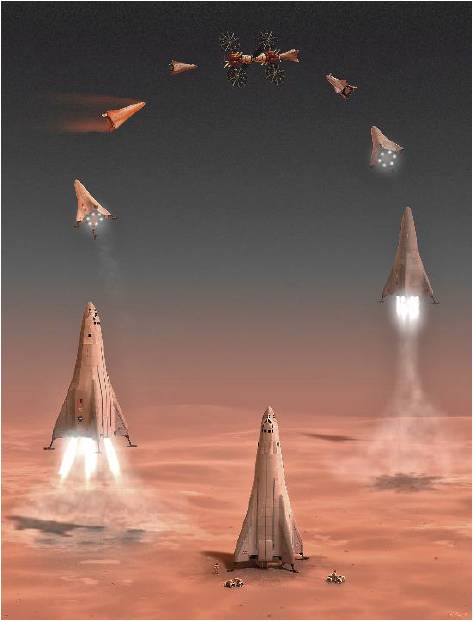
Exploration parties
On the Mars orbiting complex, crewmembers would be immersed in a continuous data flood from the rovers, and they'd have the feeling of being front and center on Mars, Clark said.
"They'll have such good imagery, they'll be able to make decisions as they go," while probing a zone of interest, he said. Mars Base Camp astronauts could cover large distances and even reconstruct, via images, areas in great detail, he said.
Clark foresees the use of avatars — electronic "Mars walkers" that are manipulated by a computer user in a virtual space. Those avatars could make up different field-exploration parties that tromp about virtually on the planet, he said.
"Wearing goggles on the Mars Base Camp, researchers can decide where they want to be … point to another spot … give the right gesture, and you sort of teleport yourself to another place you want to be," Clark said. "Your body didn't move, but the terrain moved to where you want to stand."
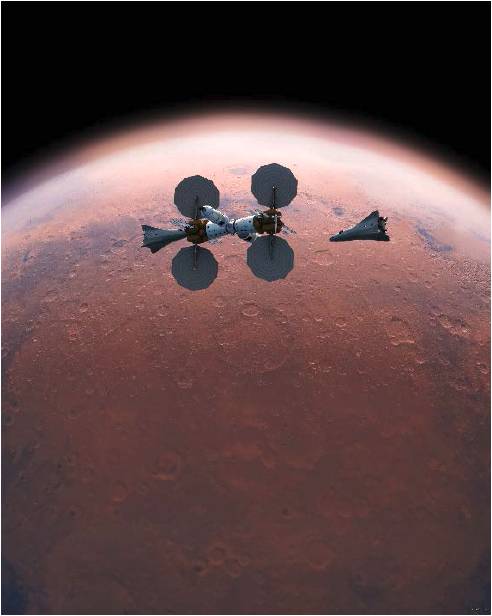
Boots on the ground
Jolly stressed that the Mars Base Camp is not a substitute for getting actual boots on the Red Planet.
"It's a precursor," Jolly said, pointing to other aspects of the Mars Base Camp scenario.
For example, Lockheed Martin has looked into developing a reusable sortie system to get astronauts from Mars Base Camp down to the surface and back to orbit again. A single-stage lander and ascent vehicle would enable two-week missions to Mars, with the ability to abort at any time.
Similarly, human excursions to Mars' two moons, Phobos and Deimos, are being assessed.
Indeed, the Mars Base Camp architecture could support a diversity of missions to low-gravity bodies, Earth's moon, Mars and beyond, Jolly said. The Lockheed Martin plan invites international partners to contribute ideas to this human-rated interplanetary exploration system.
"Now is the time to shape the future," Jolly said.
Leonard David is author of "Mars: Our Future on the Red Planet," published by National Geographic. The book is a companion to the National Geographic Channel series "Mars." A longtime writer for Space.com, David has been reporting on the space industry for more than five decades. Follow us @Spacedotcom, Facebook or Google+. Originally published on Space.com.
Join our Space Forums to keep talking space on the latest missions, night sky and more! And if you have a news tip, correction or comment, let us know at: community@space.com.

Leonard David is an award-winning space journalist who has been reporting on space activities for more than 50 years. Currently writing as Space.com's Space Insider Columnist among his other projects, Leonard has authored numerous books on space exploration, Mars missions and more, with his latest being "Moon Rush: The New Space Race" published in 2019 by National Geographic. He also wrote "Mars: Our Future on the Red Planet" released in 2016 by National Geographic. Leonard has served as a correspondent for SpaceNews, Scientific American and Aerospace America for the AIAA. He has received many awards, including the first Ordway Award for Sustained Excellence in Spaceflight History in 2015 at the AAS Wernher von Braun Memorial Symposium. You can find out Leonard's latest project at his website and on Twitter.
